What Happened to the Titanic Tourist Submarine? Did They Ever Find It?

- Oops!Something went wrong.Please try again later.
- Oops!Something went wrong.Please try again later.
Potential trigger warning to anyone with claustrophobia. If you’ve been following the news lately about a group of five travelers venturing to the ocean deep, you’ll be wanting a full rundown of what happened to the Titanic tourist submarine that triggered an intense rescue mission on Sunday, June 18, 2023.
The ill-fated ship, the RMS Titanic, was the largest liner at the time with room for more than 2,400 passengers and more than 800 staff and crew. While on its maiden voyage from England to the United States, it struck an iceberg in the freezing waters of the North Atlantic Ocean on 15 April 1912. Most perished, including Captain Edward Smith, though a reported 712 survived. For more than a century, the disaster has been the source of much intrigue and mystery. The wreckage itself—which was split into two pieces—wasn’t discovered until 1985 in Canadian waters, shrouded in icicle-like growths of rust, called “rusticles.” Titanic’s wreck lies some 435 miles (700km) south of St John’s, Newfoundland, though the rescue mission is being run from Boston, Massachusetts.
In 1997, pioneering filmmaker James Cameron brought on new and mainstream interest in the wreck with his romantic tragedy film Titanic, starring Leonardo DiCaprio and Kate Winslet. Cameron shot actual footage of the wreck with then-cutting-edge technology, even venturing to the wreckage himself in a submarine, and has been at the site 33 times since. He was aware of how risky making the first trip was. “You’re going into one of the most unforgiving places on earth,” he said in an interview with The New York Times shortly before setting off on a trip in 2012: “It’s not like you can call up AAA to come get you.”
Even though there’s little for researchers to gain from the wreckage site now, there’s still an extraordinary level of cultural interest in visiting the Titanic’s final resting place, OceanGate Expeditions established itself in 2009 to offer private citizens an opportunity to see what few have, if you can afford it: the company charges $250,000 per person for a submersible tour of the wreck. According to the website, “OceanGate has successfully completed over 14 expeditions and over 200 dives in the Pacific, Atlantic and Gulf of Mexico. Following every mission, the team evaluates and updates the procedures as part as a continued commitment to evolve and ensure operational safety.” Here’s what happened to the Titanic tourist submarine.
What happened to the Titanic tourist submarine?
A timeline of events.
Best of StyleCaster
The 26 Best Romantic Comedies to Watch if You Want to Know What Love Feels Like
These ‘Bachelor’ Secrets & Rules Prove What Happens Behind the Scenes Is So Much Juicier
BTS's 7 Members Were Discovered in the Most Unconventional Ways
June 28

More than a week after the Titan submersible was first reported missing, debris from the vessel was recovered and returned to land, arriving in St. John’s, Newfoundland on June 28, 2023.
United States medical professionals will conduct a formal analysis of presumed human remains that have been carefully recovered within the wreckage at the site of the incident, per a press release from the Coast Guard. “I am grateful for the coordinated international and interagency support to recover and preserve this vital evidence at extreme offshore distances and depths,” stated MBI Chair Captain Jason Neubauer. “The evidence will provide investigators from several international jurisdictions with critical insights into the cause of this tragedy. There is still a substantial amount of work to be done to understand the factors that led to the catastrophic loss of the TITAN and help ensure a similar tragedy does not occur again.”
June 25

The mother of the youngest Titan victims, 19-year-old Suleman Dawood, revealed she gave up her seat on the vessel and that he took a Rubik’s cube with him to solve at the bottom of the ocean. Christine Dawood told the BBC on June 25 that she was supposed to visit the Titanic wreck with her husband, Shahzada, but their original trip was canceled because of the COVID-19 pandemic.
When it was reorganized, she gave up her seat so that her son could go in her place. “Then I stepped back and gave them space to set [Suleman] up, because he really wanted to go,” she said. “I was really happy for them because both of them, they really wanted to do that for a very long time.”
She continued:
“He said, ‘I’m going to solve the Rubik’s Cube 3,700 metres below sea at the Titanic.’ ” explaining that he could solve the puzzle in 12 seconds. Of their final moments, Christine reflected: “Well we just hugged and joked actually, because Shahzada was so excited to go down, he was like a little child. So the sentence, we lost comm, I think that will be a sentence I never want to hear in my life again.”
“Past the 96 hours mark, that’s when I lost hope,” she said, onboard the sub’s Canadian support ship the Polar Prince. “That’s when I sent a message to my family on shore, ‘I’m preparing for the worse.’ … I miss them, I really, really miss them,” she added.
June 23, 2023
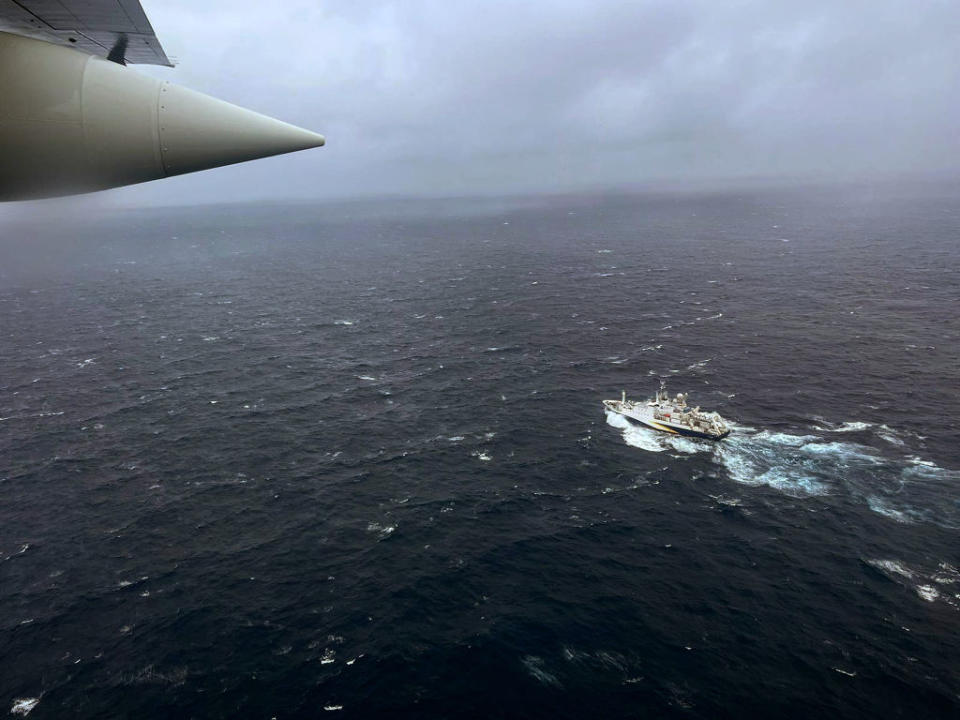
Recovery is underway after authorities deemed the missing Titan sub had suffered a “catastrophic implosion”, killing all five on board. Search crews remotely operating an underwater vehicle discovered a debris field Thursday morning in the general area of the Titanic, about 1,600 feet from the bow of the sunken ship.
Titan’s final moments would have been swift, experts say, as the pressure at the depth of the Titanic — 12,500 feet down — is nearly 380 times greater than at the surface. Eric Fusil, a submarine expert and associate professor at the University of Adelaide’s School of Electrical and Mechanical Engineering told USA Today it would take about “20 milliseconds to crush a hull” at those depths. A small comfort in a tragic outcome.
June 22, 2023

Titanic director and deep-sea explorer James Cameron said in an interview on Thursday June 22 that he had predicted the fate of the Titan submersible 24 hours after it went missing on Sunday, then watched the “futile” search unfold, “hoping against hope that I was wrong.”
He explained to CNN’s Anderson Cooper that he missed the initial news as he had been out at sea himself, but upon his return on Monday and hearing the news from OceanGate, he was in contact with his colleagues in what he called “the deep submergence community.”
Cameron said he’d begun to suspect an implosion, “a shockwave of events so powerful that it actually took out” the sub’s tracking, a secondary system with its own fail-safes.
“I got on the horn again with some other people, tracked down some intel that was probably of a military origin, although it could have been research—because there are hydrophones all over the Atlantic—and got confirmation that there was some kind of loud noise consistent with an implosion event,” the director continued. “That seemed to me enough confirmation. I let all of my inner circle of people know that we had lost our comrades. And I encouraged everybody to raise a glass in their honor on Monday.”.
He added: “I couldn’t think of any other scenario in which a sub would be lost where it lost comms and navigation at the same time and stayed out of touch and did not surface.”
June 22, 2023
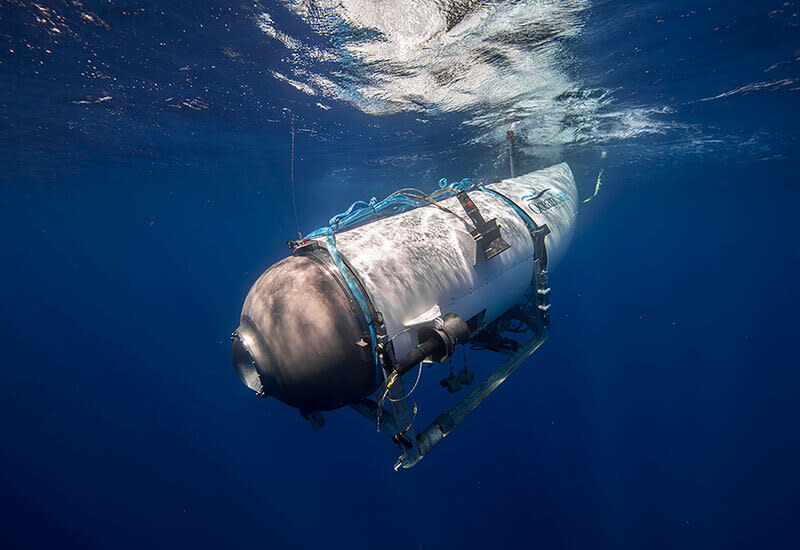
Oceangate announced that the five passengers are dead. “We now believe that our CEO Stockton Rush, Shahzada Dawood and his son Suleman Dawood, Hamish Harding, and Paul-Henri Nargeolet, have sadly been lost,” OceanGate said in a statement.
“These men were true explorers who shared a distinct spirit of adventure, and a deep passion for exploring and protecting the world’s oceans. Our hearts are with these five souls and every member of their families during this tragic time. We grieve the loss of life and joy they brought to everyone they knew.”
In a press conference, the US Coast Guard confirmed that they found a piece of debris from the submersible. An ROV discovered debris 1,600 feet from the bough of the tailbone of the ‘Titanic’ wreckage on the sea floor. “The debris is consistent with a catastrophic implosion of the pressure chamber,” Rear Admiral John Mauger told reporters. “Upon this determination, we immediately notified the families. On behalf of the United States Coast Guard and the entire unified command, I offer my deepest condolences to the families. I can only imagine what this has been like for them, and I hope that this discovery provides some solace during this difficult time.” They also confirmed that the banging was inconsistent with a catastrophic implosion.
June 22, 2023

The New York Times revealed that Wendy Rush, wife of a submersible pilot Stockton Rush and who is director of communications at OceanGate — is the great-great-granddaughter of Isidor and Ida Strauss, who went down with the Titanic when it sank. Isidor was a co-founder of Macy’s and a U.S. House Representative.
According to the newspaper, Wendy descended from one of the Strauses’ daughters, Minnie, who married Dr. Richard Weil in 1905. Isa and Isidor’s story has been well documented as two of the wealthiest people on board the Titanic at the time. The two refused to board the lifeboats as Isidor didn’t want to go on when women and children were still waiting to flee the sinking liner. Ida stood by her husband’s side and the two were last seen on the deck of the Titanic while it was sinking. Isidor’s body was recovered two weeks after the ship sank.
In 2017, one of the Strauss’ descendants, Paul Kurzman spoke about their ancestor’s bravery to Today. “My great-grandmother Ida stepped into the lifeboat expecting that her husband would follow,” Kurzman said. “When he didn’t follow, she was very concerned and the ship’s officer in charge of lowering that particular lifeboat said, ‘Well, Mr. Straus, you’re an elderly man … and we all know who you are. … Of course, you can enter the lifeboat with your wife,’ ”
He continued: “And, my great-grandfather said, ‘No. Until I see that every woman and child on board this ship is in a lifeboat, I will not enter into a lifeboat myself.’ ” Their story was fictionalized in 1997 with the cinematic hit from James Cameron, here the two embrace each other in bed as water floods their cabin.
Wednesday June 21, 2023
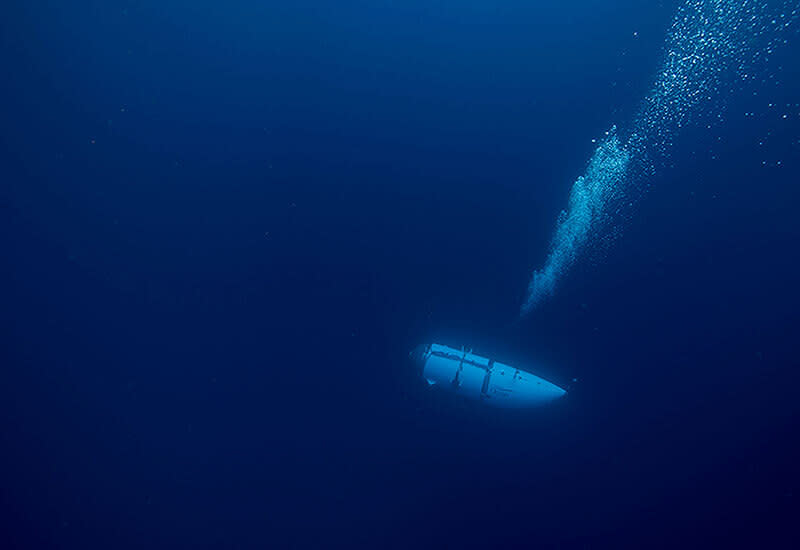
A Canadian aircraft searching for the missing Titan submersible has detected “banging sounds” at 30-minute increments near where the vessel is believed to have gone missing, Rolling Stone reported.
According to internal email updates sent by the Department of Homeland Security’s National Operations Center obtained by the magazine: “RCC Halifax launched a P8, Poseidon, which has underwater detection capabilities from the air,” the DHS e-mails read. “The P8 deployed sonobuoys, which reported a contact in a position close to the distress position. The P8 heard banging sounds in the area every 30 minutes. Four hours later, additional sonar was deployed and banging was still heard.”
The announcement also stated that “the Joint Rescue Coordination Centre is working to find an underwater remote-operated vehicle through partner organizations to possibly assist.”
The previous day, an email from the president of the travel and research group, the Explorers Club stated, “It is being reported that at 2 a.m. local time on site that sonar detected potential ‘tapping sounds’ at the location, implying crew may be alive and signaling,” per Rolling Stone.
Tuesday June 20, 2023
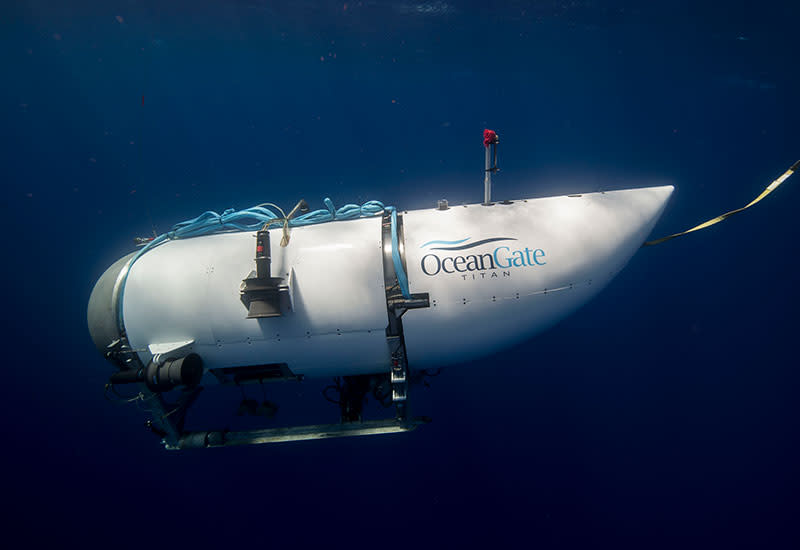
The identities of the five people, including a pilot and four others, onboard the Titan submersible, have been confirmed. Those include Paul-Henri Nargeolet, a French maritime expert who has been on over 35 dives to the Titanic wreck site, Hamish Harding, a British businessman and explorer, British businessman Shahzada Dawood, and his 19-year-old son, Suleman, and Stockton Rush, the founder, and CEO of OceanGate.
During a press conference, the United States Coast Guard officials said the five people within Titan have roughly 40 hours of breathable air left. Capt. Jamie Frederick said that crews were “doing everything possible” as part of a “complex search effort.” But so far, he said, those efforts “have not yielded any results,” per the New York Times.
Harding acknowledged in a 2021 interview that he had taken on deep-sea missions in the past knowing that rescue would not be an option. “If something goes wrong, you are not coming back,” he told the Indian newsmagazine The Week.
A letter addressed to OceanGate CEO Stockton Rush, obtained by the New York Times, revealed how in 2018, leaders in the submersible craft industry were so worried about what they called the “experimental” approach of OceanGate, they warned of “catastrophic” problems with the vessel’s development.“ The submersible industry had significant concerns over the strategy of building a deep sea expedition submersible without following existing classification safety guidelines,” chairman of the committee, Will Kohnen, told the Times.
Monday June 19, 2023
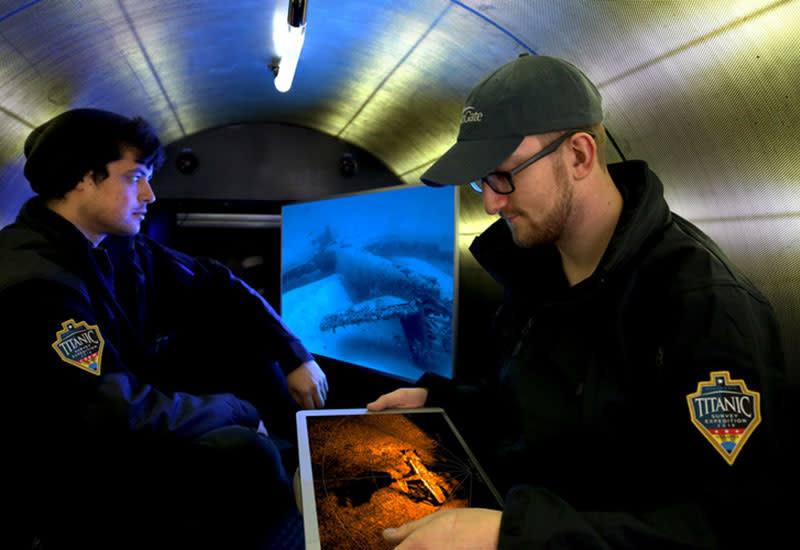
Search and rescue efforts are in a race against time to find the missing vessel, which is said to carry around four days—96 hours—of emergency oxygen. Writer Mike Reiss, who took the same trip in 2022, that “you sign a massive waiver that lists, one way after another, that you could die on the trip,” he told BBC Breakfast. “They mention ‘death’ three times on page one, and so it’s never far from your mind. … So nobody in this situation was caught off-guard.”
OceanGate shared a media release on Twitter: “We are exploring and mobilizing all options to bring the crew back safely. Our entire focus is on the crewmembers in the submersible and their families. We are deeply thankful for the extensive assistance we have received from several government agencies and deep sea companies in our efforts to reestablish contact with the submersible. We are working toward the safe return of the crewmembers.”
Have submersibles been rescued before?
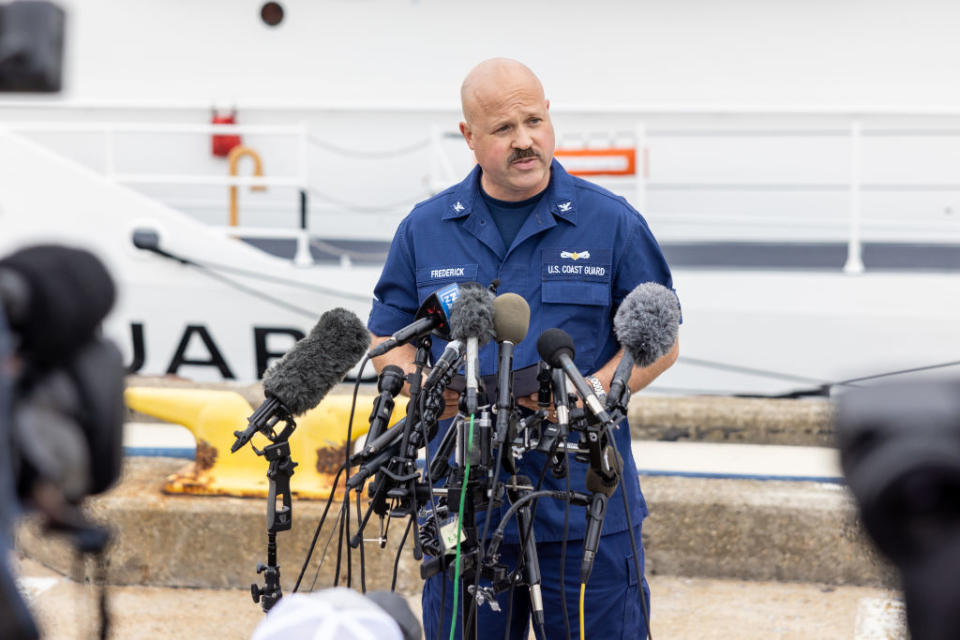
Deep sea rescues have a mixed track record. During World War I, the Royal Navy HMS K13 was on a training mission in Gareloch, Scotland, with 80 people on board. Ventilators in the engine were not properly closed and the submarine was flooded. A rescue mission wasn’t launched til the following day, and while 48 made it, 32 of the crew did not survive.
In 1939, during another training mission, the USS Squalus carrying 56 Navy personnel and three civilians were on board. An air valve in the engine room failed which flooded the compartment. The sub was under 240 of water, and so 26 immediately perished. A newly-developed rescue chamber was used to bring the rest of the surviving crew to the surface.
On August 29 1973, the two-man crew of the Pisces III, a commercial sub, were working to lay transatlantic telephone cables, per the BBC. The vessel plunged more than 1,500ft as they were waiting for the towline to be attached to lift them and take them back to the mother ship. Hitting the bottom, they managed to make contact with the surface, with 66 hours left of emergency oxygen. After coordinating a rescue mission, Pisces III was finally lifted from the ocean floor on September 1 but it took almost 30 minutes to open the hatch. “We had 72 hours of life support when we started the dive so we managed to eke out a further 12.5 hours. When we looked in the cylinder, we had 12 minutes of oxygen left,” pilot Roger Chapman told the BBC in August 2013.
Finally, in 2005, the Russian AS-28 and seven crewmembers became snagged in a fishing net during a military exercise. Initial efforts to recover the vessel failed, leading Russia to seek international assistance. British and American rescue crews finally freed the sub.
Have submersibles been rescued before?
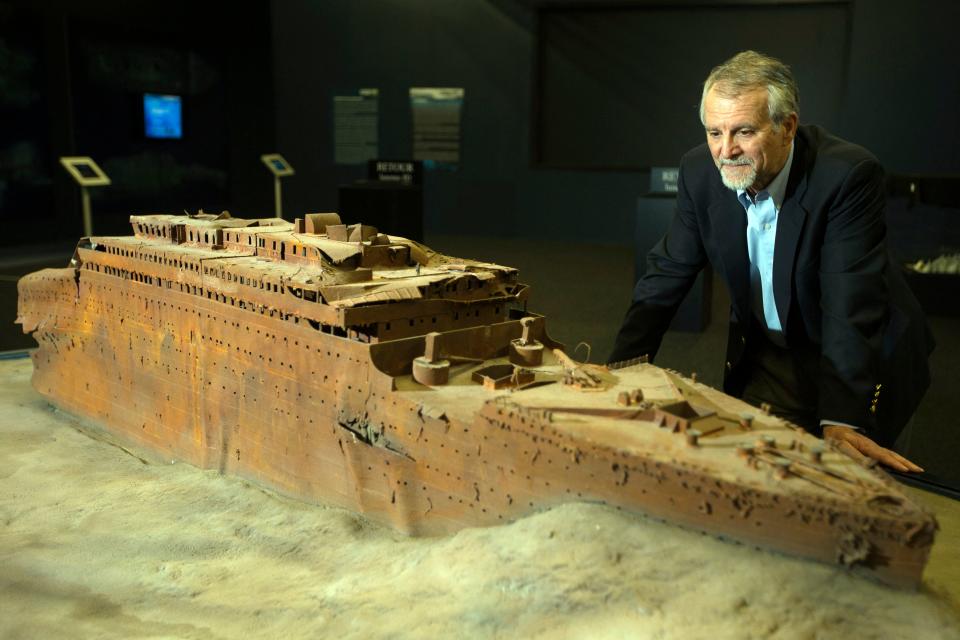
Deep sea rescues have a mixed track record. During World War I, the Royal Navy HMS K13 was on a training mission in Gareloch, Scotland, with 80 people on board. Ventilators in the engine were not properly closed and the submarine was flooded. A rescue mission wasn’t launched til the following day, and while 48 made it, 32 of the crew did not survive.
In 1939, during another training mission, the USS Squalus carrying 56 Navy personnel and three civilians were on board. An air valve in the engine room failed which flooded the compartment. The sub was under 240 of water, and so 26 immediately perished. A newly-developed rescue chamber was used to bring the rest of the surviving crew to the surface.
On August 29 1973, the two-man crew of the Pisces III, a commercial sub, were working to lay transatlantic telephone cables, per the BBC. The vessel plunged more than 1,500ft as they were waiting for the towline to be attached to lift them and take them back to the mother ship. Hitting the bottom, they managed to make contact with the surface, with 66 hours left of emergency oxygen. After coordinating a rescue mission, Pisces III was finally lifted from the ocean floor on September 1 but it took almost 30 minutes to open the hatch. “We had 72 hours of life support when we started the dive so we managed to eke out a further 12.5 hours. When we looked in the cylinder, we had 12 minutes of oxygen left,” pilot Roger Chapman told the BBC in August 2013.
Finally, in 2005, the Russian AS-28 and seven crewmembers became snagged in a fishing net during a military exercise. Initial efforts to recover the vessel failed, leading Russia to seek international assistance. British and American rescue crews finally freed the sub.

